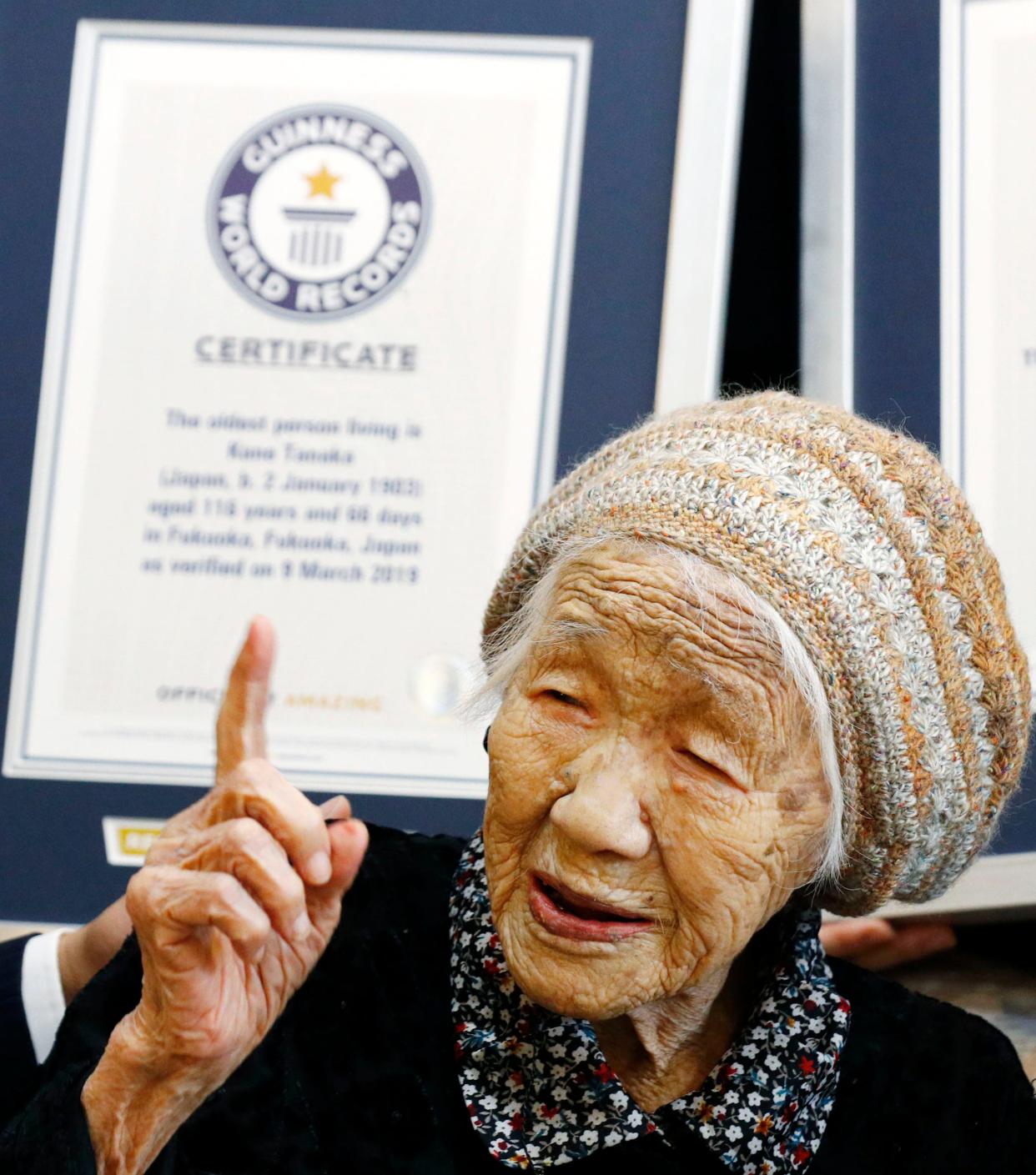Living to 100 years old is becoming the new normal

- Oops!Something went wrong.Please try again later.
Did you happen to read the story recently about the oldest living human being? Kane Tanaka, who is Japanese, is 119 years old. She is what is known as a supercentenarian.
What has changed? Are people really living much longer?
As many as half of today’s 5 year olds in the United States can expect to live to the age of 100 and, according to the Stanford Center on Longevity, this “may become the norm for newborns by 2050.” Why are people living longer? Better health care and nutrition, a focus on disease prevention, better education and rising standards of living for a larger portion of the world population.
Everything I just listed is expected to improve in all countries, even the poorest. If you doubt this, pick up the book “Factfulness,” by Hans Rosling, past advisor to the World Health Organization and UNICEF. This book was a real eye-opener for me on world trends and how the world is in a much better state than we think.
It is hard to believe that the average lifespan in 1950 was just 47. Human life expectancy has doubled between 1900 and 2000 and is still rising, despite the COVID pandemic. Currently in the U.S. there are over 75 million aging baby boomers, and many are expected to live well past 90.
“The possibility of living for nine, ten or more decades raises a uniquely twenty-first-century question: what are we going to do with our century-long lives?” The Stanford Center on Longevity poses this question and does an excellent job of answering it. In 2018 it launched an initiative called The New Map of Life, believing that “one of the most profound transformations of the human experience calls for equally momentous and creative changes in the ways we lead these 100-year lives, at every stage.”
More from Star Bradbury:
Discussing wishes for care with loved ones is the best present
Amazon plans to deliver health care to your door
Nursing homes need to be prepared for climate disasters
This study is truly inspirational, as it calls on all of us to completely reevaluate what it means to grow old. We need to reinvent ourselves on many levels such as the way we work and for how long, housing, financial planning and new policies for health care. Instead of focusing on lifespan, we need to look at what they call “health span,” or the years in which people are healthy, active, mentally sharp and free of pain.
The Stanford Longevity Center has a goal: “… we take a forward-facing perspective on the economic potential of a more age-diverse population in which older adults contribute increasingly significant and measurable ways to the social good and to GDP, so that opportunities for healthy longevity are shared across races, geographical regions, and socioeconomic status.”
All of us need to re-think everything from “front-loading education into the first two decades of life,” to retiring at age 65. What if education was a continuum of lifelong learning, acquiring knowledge at each stage of life? If you thought you could live to 100 with a reasonable quality of life, would you go back to school at 50, have multiple flexible careers, take better care of yourself?
Currently workers over the age of 55 make up 25% of the work force. Contrary to old stereotypes, evidence suggests that older workers show superior judgement, reliability and mentoring skills, and are fully capable of mastering the technology needed.
With so many younger people leaving the workforce, employers need to consider the value of hiring older workers on a flexible schedule. They offer a vast amount of life experiences whether as paid workers, mentors or volunteers. Having a truly age-diverse workforce also has the added benefit of improving intergenerational communications, something we could all benefit from.
Before you say you don’t want to live to be 100, read this study and see their predictions for the future. The emerging field of “geroscience” will transform how we age, able to “re-program” the genetic, molecular and cellular mechanisms that result in age being the primary factor for degenerative conditions.
Advanced interventions will be possible that may be able to slow or even reverse some aging processes. Imagine a wearable exoskeleton that allows you to stay mobile or ride a bike at age 90!
Start by asking yourself personally what you would do differently if you knew you were going to live to 100 and draw your own Map of Life. You might be surprised by the changes you’d make.
Star Bradbury (www.starbradbury.com) is the owner of Senior Living Strategies in Gainesville.
Join the conversation
Send a letter to the editor (up to 200 words) to letters@gainesville.com. Letters must include the writer's full name and city of residence. Additional guidelines for submitting letters and longer guest columns can be found at bit.ly/sunopinionguidelines.
Journalism matters. Your support matters.
Get a digital subscription to the Gainesville Sun. Includes must-see content on Gainesville.com and Gatorsports.com, breaking news and updates on all your devices, and access to the Gainesville.com ePaper. Visit www.gainesville.com/subscribenow to sign up.
This article originally appeared on The Gainesville Sun: Star Bradbury: Why are more people living to 100 years old and beyond?

